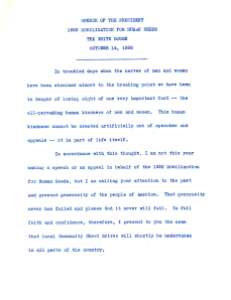The Great Hurricane of 1938: Government and Citizens Working Together
As Hurricane Irene bears down on the East Coast of the United States, it brings to mind the Great Hurricane of 1938 that brought devastation to Long Island, Connecticut, Rhode Island, and Massachusetts. On September 21, 1938, entire coastal communities were simply swept off the map and into the sea. Some 700 people died in the storm and hundreds more were injured. Rhode Island was particularly hard hit by the winds and the storm surge. Two billion trees across New York and New England were ripped from the ground, leveling old growth forests.
Before FDR, such a disaster would have been responded to only by local authorities and private aid groups such as the Red Cross. But thanks to the New Deal, thousands of Americans were employed through the Works Progress Administration, the National Youth Administration, and the Civilian Conservation Corps and were readily mobilized to assist in short-term rescue and recovery and long-term rebuilding efforts. 
On October 14, 1938, President Roosevelt used his annual radio address for the Mobilization for Human Needs charity campaign to talk about the importance of the partnership between private organizations and the government. The two are not mutually exclusive, FDR pointed out. Working together, the government and private citizens can respond more effectively to disasters such as the Great Hurricane of 1938, and can better lift up that one-third of a nation still ill-housed, ill-clad, and ill-nourished to a standard of living worthy of America.
The document displayed here is FDR’s reading copy for the radio address he delivered from the White House.

You must be logged in to post a comment.